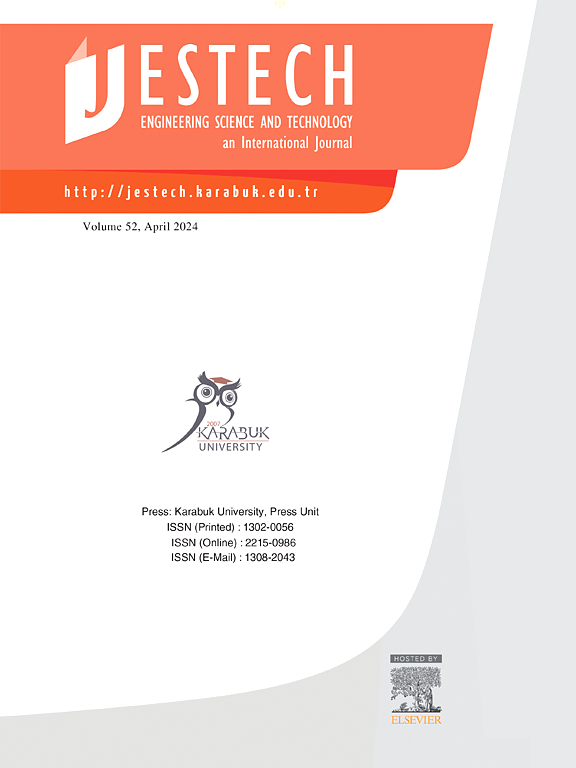热固性弹性体的增材制造:新兴技术综述
IF 5.1
2区 工程技术
Q1 ENGINEERING, MULTIDISCIPLINARY
Engineering Science and Technology-An International Journal-Jestech
Pub Date : 2025-07-17
DOI:10.1016/j.jestch.2025.102143
引用次数: 0
摘要
热固性弹性体(tse)由于其灵活性和稳定性而广泛应用于汽车,家用电器,医疗保健和时尚等行业。然而,这些相同的特性使得使用增材制造(AM)技术处理tse具有挑战性。本文将用于生产tse的增材制造技术分为三大类:基于光聚合、两相和基于材料挤压的技术。光聚合提供了高分辨率和材料的多功能性,但受到构建尺寸和环境影响的限制。两相系统具有可调的性能,但存在流变和粘合问题,而材料挤压更具成本效益,但精度较低。总的来说,目前的研究主要集中在技术和配方开发上。3d打印tse的机械特性通常限于拉伸性能。全面的机械测试,包括特定应用的性能,仍然很少,仍然是未来技术进步资格的重要领域。3D打印tse的可持续性方面也得到了解决,重点是环保原材料的选择和3D打印方法的一般环境考虑因素。该领域的新兴趋势包括智能材料的开发、可持续解决方案以及将人工智能和机器学习结合在一起的综合混合方法。本文章由计算机程序翻译,如有差异,请以英文原文为准。
Additive manufacturing of thermoset elastomers: A review of emerging technologies
Thermoset elastomers (TSEs) are widely used in industries such as automotive, household appliances, healthcare, and fashion due to their flexibility and stability. However, these same properties make TSEs challenging to process using additive manufacturing (AM) techniques. This review categorizes AM technologies for producing TSEs into three main groups: photopolymerization-based, two-phase, and material extrusion–based techniques. Photopolymerization offers high resolution and material versatility but is constrained by build size and environmental impacts. Two-phase systems enable tunable properties but suffer from rheological and bonding issues, while material extrusion is more cost-effective yet less precise. Overall, current research primarily concentrates on technology and formulation development. Mechanical characterization of 3D-printed TSEs is typically limited to tensile properties. Comprehensive mechanical testing, including application-specific properties, is still rare and remains an essential area for future qualification of technological advances. The sustainability aspects of 3D printing TSEs are also addressed, with a focus on environmentally friendly raw material selection and the general environmental considerations of 3D printing methods. Emerging trends in this field include the development of smart materials, sustainable solutions, and integrated hybrid methods that incorporate artificial intelligence and machine learning.
求助全文
通过发布文献求助,成功后即可免费获取论文全文。
去求助
来源期刊

Engineering Science and Technology-An International Journal-Jestech
Materials Science-Electronic, Optical and Magnetic Materials
CiteScore
11.20
自引率
3.50%
发文量
153
审稿时长
22 days
期刊介绍:
Engineering Science and Technology, an International Journal (JESTECH) (formerly Technology), a peer-reviewed quarterly engineering journal, publishes both theoretical and experimental high quality papers of permanent interest, not previously published in journals, in the field of engineering and applied science which aims to promote the theory and practice of technology and engineering. In addition to peer-reviewed original research papers, the Editorial Board welcomes original research reports, state-of-the-art reviews and communications in the broadly defined field of engineering science and technology.
The scope of JESTECH includes a wide spectrum of subjects including:
-Electrical/Electronics and Computer Engineering (Biomedical Engineering and Instrumentation; Coding, Cryptography, and Information Protection; Communications, Networks, Mobile Computing and Distributed Systems; Compilers and Operating Systems; Computer Architecture, Parallel Processing, and Dependability; Computer Vision and Robotics; Control Theory; Electromagnetic Waves, Microwave Techniques and Antennas; Embedded Systems; Integrated Circuits, VLSI Design, Testing, and CAD; Microelectromechanical Systems; Microelectronics, and Electronic Devices and Circuits; Power, Energy and Energy Conversion Systems; Signal, Image, and Speech Processing)
-Mechanical and Civil Engineering (Automotive Technologies; Biomechanics; Construction Materials; Design and Manufacturing; Dynamics and Control; Energy Generation, Utilization, Conversion, and Storage; Fluid Mechanics and Hydraulics; Heat and Mass Transfer; Micro-Nano Sciences; Renewable and Sustainable Energy Technologies; Robotics and Mechatronics; Solid Mechanics and Structure; Thermal Sciences)
-Metallurgical and Materials Engineering (Advanced Materials Science; Biomaterials; Ceramic and Inorgnanic Materials; Electronic-Magnetic Materials; Energy and Environment; Materials Characterizastion; Metallurgy; Polymers and Nanocomposites)
 求助内容:
求助内容: 应助结果提醒方式:
应助结果提醒方式:


